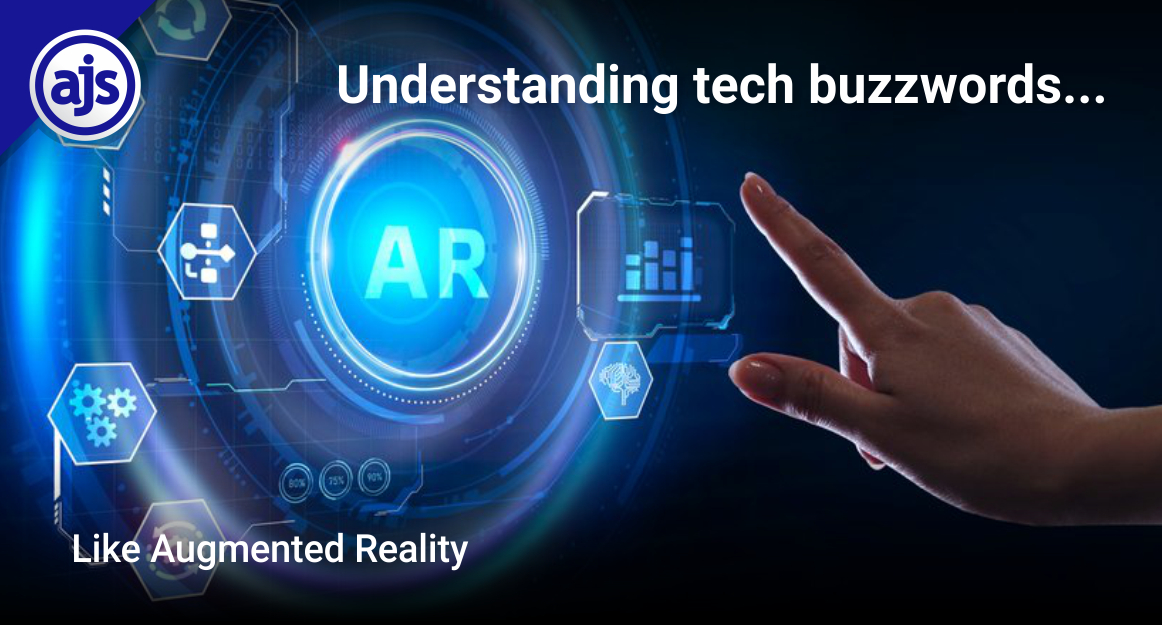
UNDERSTANDING TECH BUZZWORDS: Like AR
Like Augmented Reality
Choices. Choices are a big part of our everyday life. From what we are going to eat to what colour we are going to paint our bedroom walls.
So many things we need to decide on and with so much choice around us, some of us have a hard time making a decision one way or the other. Thankfully, some companies like Dulux for instance, have come up with a nifty little way to see how a paint colour will look on your wall. This is done through the Dulux Visualizer app which allows you to “picture it before you paint it”.
Exactly what some indecisive people need – visualization. And that’s exactly what we are going to talk about in this article.
Augmented Reality or AR friends is the name of this game.
Not often included in the list of buzzwords touted by some unscrupulous service providers who claim they can offer you everything and the kitchen sink with their products. But worth learning about, nevertheless. Because the truth is, whether you believe them or not, would you really know if they didn’t have AR?
It’s so easy to get mislead by all the buzzwords out there, that most of the time you are taking providers at their word. Not really knowing any better yourself. This may be ok with the providers you know and can trust but what about the new guys on the block that promise you the world? How can you tell the smooth operators from the “keep their promisers”?
One way is to become well acquainted with the buzzwords out there so that you can pick out the take-a-chance “sharks” from the noble (and trusted) workhorses.
And we thought we would help you out with understanding a few of those buzzwords yourself. So that you can decide what is best for you.
Take AR as an example…
Let’s demystify AR
AR is defined by SAP as the following –
“Augmented reality is an interactive experience that enhances the real world with computer-generated perceptual information. Using software, apps, and hardware such as AR glasses, augmented reality overlays digital content onto real-life environments and objects. This enriches the user experience and turns one’s immediate surroundings into an interactive learning environment which is particularly valuable in manufacturing and Industry 4.0 processes. It allows industrial users to become “one” with the systems and machines they work with, and to optimize and augment technology and IoT networks with human ingenuity, observation, and creativity”.
Or as more simply put – AR is the real-time use of information in the form of text, graphics, audio and other virtual enhancements integrated with real-world objects (Gartner). The perfect example is the Dulux Visualizer App that lets you superimpose a specific colour onto a wall to see how it looks – enhancing the user’s experience and shifting their perspective.
A little history if you please
AR may sound all shiny and new, but the truth is it’s been around since 1968. AR was developed by computer scientist Ivan Sutherland at Harvard. Sutherland also pioneered computer graphics, so the move from graphics to AR isn’t too much of a departure.
As Pluralsight set out –
“The term “augmented reality” wasn’t coined until 1990 by Boeing researcher and scientist Thomas P. Caudell. Caudell invented the term during the development of the Boeing 747 when considering the concept of a screen that could guide workers during the assembly of the aircraft….
In 2012, AR became more mainstream when Google unveiled its optical head-mounted display, Google Glass. While the augmented reality glasses didn’t quite take off as the tech giant had hoped, they definitely brought the concept of AR to the masses.”.
And there you have it. We may be talking about AR in 2023 but its actually 55 years old. Who would’ve thought?
What’s the difference between AR and Virtual Reality (VR)?
Sure, it feels like you know everything about AR already. But that’s probably because you are confusing it with VR.
So, what’s the difference between the two?
People often toss around terms like AI (discussed previously), AR and VR as if they are one and the same thing. But they are three different types of technology.
AI Multiple sets out the difference between the two succinctly below –
“Compared to AR, virtual reality (VR) provides a more immersive experience by creating a completely artificial environment that replaces reality. Augmented reality, on the other hand, augments the real-world experience with virtual elements.
Since VR provides a more immersive experience than AR, it often requires special equipment and high-end computers. AR can be accessed with smartphones or tablets which makes it accessible to a wider audience”.
Or quite simply VR takes you into a whole new world i.e. no real world in sight whilst AR combines the real world and digital world.
How does AR work?
According to SAP, AR “superimposes superimposing digital information onto real-world objects to create a 3D experience that allows users to interact with both the physical and digital worlds”.
And it practically works as follows –
Ø by overlaying digital content in the real world with the use of a device with a camera such as your everyday smartphone, tablet, or smart glasses.
Ø The AR software then uses the camera on the smartphone, tablet, or smart glasses to process the video stream captured by the camera and to recognize objects in the surrounding environment. This allows the AR system to project virtual content to a relevant place.
Ø The AR software then displays the AR content on top of (or superimposed) the real world through the relevant device screen (AI Multiple).
Are there different types of AR?
Yes, there are two different types of AR –
1. Marker-based AR applications are triggered by specific physical images (markers) captured by the camera to position the digital content on top of it. A marker can be an object or a visual such as logos, posters, or QR codes (we have all used QR codes by now), and
2. Markerless AR doesn’t depend on markers and lets users decide where to display the digital content, regularly relying on camera, GPS and compass to gather info on the environment around you (AI Multiple)
Where is AR being used today?
While AR has significant impact in the healthcare sector, it is also making waves in the following industries –
1. “Retail – AR allows retailers to let their customers try products before buying them. Like Dulux or the IKEA Place app that lets customers place furniture in desired places so that they can visualize how the item will look in their homes.
2. Education – AR applications can be used to make learning material more accessible and help students better engage with the subject. Photomath is a prime example of learning with AR.
3. Manufacturing – AR allows fast prototyping in manufacturing and allows remote assistance in maintenance. For instance, Boeing equipped its wire production technicians with AR glasses which guides them while they wire aircrafts.
4. Logistics – AR-enabled devices can instruct human workers in a warehouse by displaying shortest routes to a shelf and provide information about items on the shelves” (AI Multiple).
5. Healthcare – AR technology “can help physicians provide a higher level of care and operate with greater precision. Neurosurgeons at Johns Hopkins University performed the institution’s first two AR surgeries on living patients in June 2020. During the first surgery, physicians used AR to fuse three vertebrae by placing six screws in the patient’s spine during a spinal fusion surgery. The technology was also used to remove a chordoma, a type of cancerous surgery, from a patient’s spine” (Pluralsight).
AR and VR are big business.
According to AI Multiple –
It’s been estimated that augmented reality (AR) and virtual reality (VR) applications have the potential to deliver a £1.4 trillion boost to the global economy by 2030. Adoption of AR/VR has accelerated as businesses discover the cost and productivity benefits: 56% of businesses have implemented augmented reality (AR) or virtual reality (VR) in some form and 35% are considering it.
And that gives us all a lot to think about in terms of applicability for the legal industry…
But the main takeaway from this article is this – when shopping around for your latest legal tech investment, don’t get hoodwinked by the overuse of technical buzzwords or empty promises of providing you the world – “Sure, we have AR” – because once you understand what the word means, you will know whether they are a smart investment or not.
(Sources used and to whom we owe thanks: Tech Target, SAP, AI Multiple, Pluralsight, and Investopedia.
If you have any questions regarding the information we have set out above or if you have any queries relating to legal tech and how you can incorporate it into your practice, get-in-touch and let’s see how we can take your software solution from good to phenomenal.
If you don’t have any software supporting your legal practice yet, it’s not a problem. We are here to help you from scratch too.
AJS – as always – has your back!
– Written by Alicia Koch on behalf of AJS





Leave a Reply